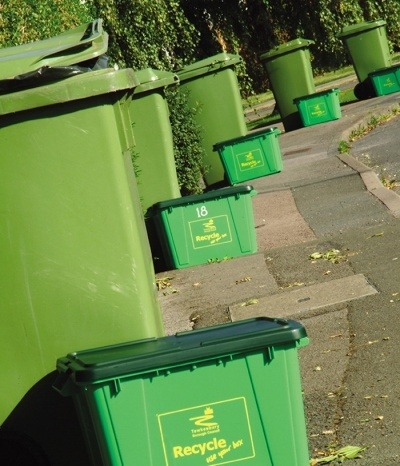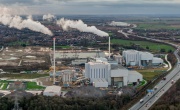England’s recycling rate falls once again
England’s ‘waste from households’ recycling rate has once again fallen following an increase last year, dropping 0.3 per cent to 44.8 per cent over 2017/18.
Released yesterday (11 December) by the Department for Environment, Food and Rural Affairs (Defra), the latest ‘Statistics on waste managed by local authorities in England 2017/18’ outline the state of local authority waste recycling and collection over the past year.
This year’s results will come as a disappointment and further increase anticipation regarding the release of the upcoming Resources and Waste Strategy as stakeholders seek fresh thinking from government on how to boost England's long flagging recycling rates.
 The fall in the recycling rate across 2017/18 was in contrast to a small boost in the recycling rate across the 2017 calendar year, rising from 44.9 per cent to 45.2 per cent.
The fall in the recycling rate across 2017/18 was in contrast to a small boost in the recycling rate across the 2017 calendar year, rising from 44.9 per cent to 45.2 per cent.
The total volume of waste from households across 2017/18 fell by 2.3 per cent to 22.2 million tonnes – 22.4 million tonnes was produced in the 2017 calendar year, a decrease of 1.5 per cent – while recycled waste fell to 10 million tonnes from 10.3 million tonnes across 2017/18, a fall of three per cent.
The volume of dry recycling fell by 3.1 per cent to 5.8 million tonnes, while organic recycling fell by 2.9 per cent to 4.1 million tonnes. The decreases in organic recycling can be largely attributed to the colder start to the year, resulting in less plant growth than usual. Residual waste fell slightly to 12.2 million tonnes, though as a proportion of total waste from households it rose to 0.3 per cent to 55.1 per cent of the total.
Local authority collected waste
With regard to the management of waste collected by local authorities – which consists of all waste from households, street sweepings, municipal parks and gardens waste, beach cleansing waste and waste resulting from the clearance of fly-tipped materials – the total amount of waste managed across 2017/18 fell by 2.6 per cent to 25.6 million tonnes.
There was yet another significant fall in the amount of waste going to landfill, with 12.5 per cent – 3.2 million tonnes – of all local authority managed waste being sent to landfill in 2017/18. This represents a fall of 22.3 per cent on 2016/17.
However, the amount of waste sent to energy-from-waste (EfW) facilities once again increased by 6.8 per cent to 10.6 million tonnes.
The overall volume of local authority waste sent for recycling in 2017/18 was 10.9 million tonnes, a decrease of 3.5 per cent on 2016/17. A total of 42.4 per cent of local authority waste was sent for recycling, down from 42.8 per cent the previous year.
Household waste recycling
Defra’s statistics also include data on ‘household waste’, which is a broader definition of waste that includes street bins, street sweepings, gully emptying, parks and grounds waste, soil and compost like output, separately collected healthcare waste and asbestos.
Recycling rates for individual local authorities ranged from 14 per cent to 64 per cent, with the overall household waste recycling rate for England standing at 43.2 per cent, 0.5 per cent lower than in 2016/17.
Overall, 10 local authorities registered recycling rates above 60 per cent, with East Riding of Yorkshire Council once again posting the highest recycling rate at 64 per cent, closely followed by South Oxfordshire District Council and Rochford District Council, both on 63 per cent. Meanwhile, 82 councils achieved a recycling rate of 50 per cent or higher.
The local authorities with the largest increase in household waste recycling rates in 2017/18 were Stroud District Council (61 per cent), Sutton London Borough Council (50 per cent) and Colchester Borough Council (55 per cent) where rates increased by between nine and sixteen percentage points.
Tonbridge and Malling Borough Council had the highest proportion of organic/green waste at 73 per cent of their total household recycled waste with an overall household recycling waste in 2017/18 of 42 per cent.
Newham London Borough Council remains the worst performing council in terms of household waste recycling, with just 14 per cent of its waste being recycled in 2017/18, with Westminster City Council the next council above having recycled 19 per cent and Lewisham Borough Council above that on 22 per cent.
In total, 138 of the 345 local authorities in England registered an increase in their recycling rates of 0.1 per cent or more in 2017/18, with the South West and South East seeing 73 per cent and 60 per cent of their local authorities increase their recycling rate respectively.
You can view the latest recycling statistics for England in full on the Defra website.




